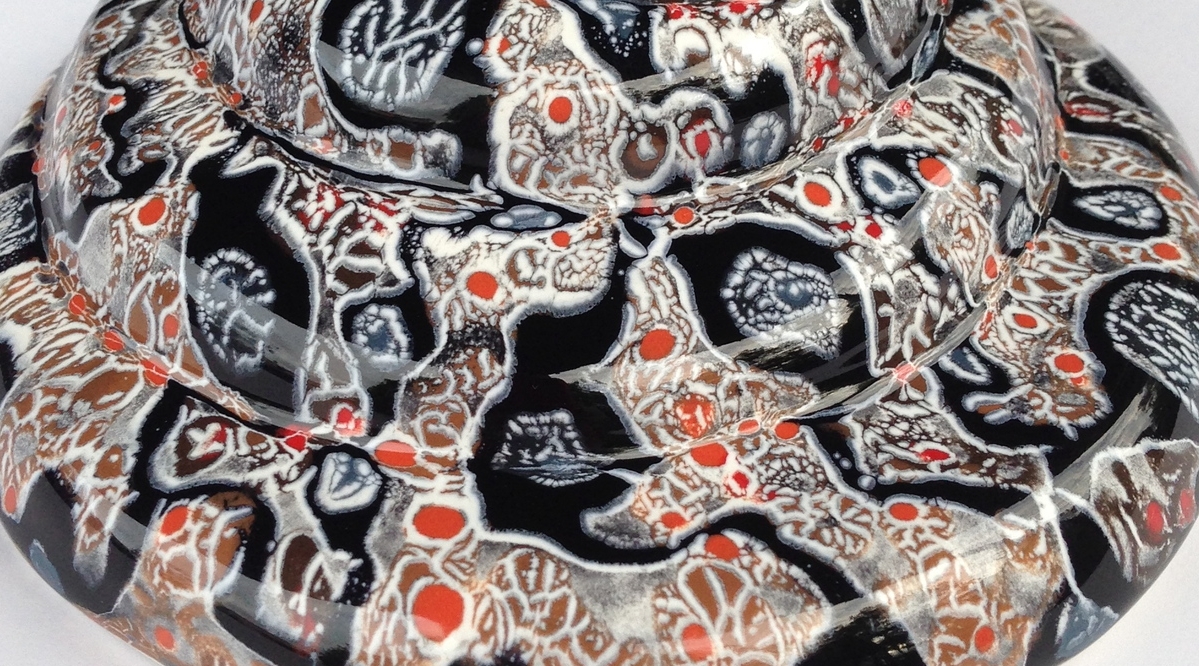Practice
Inspiration
Much of my work is based on natural structures and processes, especially mangrove forests and the ocean. Occasionally contemporary culture proves attractive. Always I love finding the beauty and connectedness evident in the animate and inanimate, large and small, and I relish encountering the patterns present at the macroscopic and microscopic levels. They mirror each other and set off parallels in my own mind on spiritual or philosophical planes.
A Jellyfish bell cast with porcelain slip in a plaster mould. The edge has been gently coaxed in while the clay is still soft so that it undulates.
Slip cast porcelain flowers and petals with edges sponged back, fired and clear glaze on inner surface. Unglazed porcelain paper clay leaves in foreground.
Raw glaze on a slip-cast shell. Other layers were added prior to firing.
Glaze after firing to 1100C.
Close up of a tile fired to 1100C.
Processes
I enjoy exploring colour, pattern and form. As my practice is exhibition-based, I choose a theme and aim to build a cohesive body of work which explores these ideas. Abstract concepts and natural sources are the initial stepping stones, and from there I work out the shapes and surfaces which I hope will be most visually expressive.
Slip-casting or hand-building multiples is the basis for much of my work. I first saw these repetitive modules though, as soulless. Why in a world of mass-production would I want to make things which were identical? It was only after I realised that my human hands could never make any two things the same (even intentionally!) that I could see their potential as a starting point.
I can explore the lines which might flow over or up from the surface of an individual piece, as well as how they can be used together to move over a wall or other plane in a way that suggests something bigger.
I also play with adding surface to commercial tiles which are so uniform by necessity, but which become individuated once glazed by hand.
Clay Bodies
I find that pale coloured clays suit my purpose, having a light weight visually, and providing a great backdrop for colour. Most slip-cast work is done in a porcelain or fine earthenware slip. It is beautiful as a base for glaze but also delightful to carve when leatherhard. Occasionally I deform pieces when they are still malleable and then sponge back the edge to give an interesting line eg. flowers, bowls and jellyfish.
Slabs for individual sculptures are often made of paper clay (sometimes home-made using a white stoneware or earthenware body mixed with toilet paper slurry). Paper clay is so forgiving and it allows fiddly bits to be formed and added.
A white raku body is used for tile work when a commercial tile is not an option.
Surface Treatments
Slips, underglazes, glazes, lustres and porcelain paints provide the surface decoration and most are purchased. I find I can achieve a pleasing effect, with products that are easy to use. From that starting point, I often mix store-bought finishes to get different and unexpected effects.
I'm certainly very grateful for the work of other ceramicists and industrial chemists who've developed such reliable products through centuries of experimentation and knowledge.
Firing
Most work is bisqued to 1060C and then glaze-fired to Earthenware (1100C) or Stoneware (Cone 10 = my 1260C) in an electric kiln (oxidation).
The temperature I choose depends on the finish and the strength which will work best for the finished piece.






